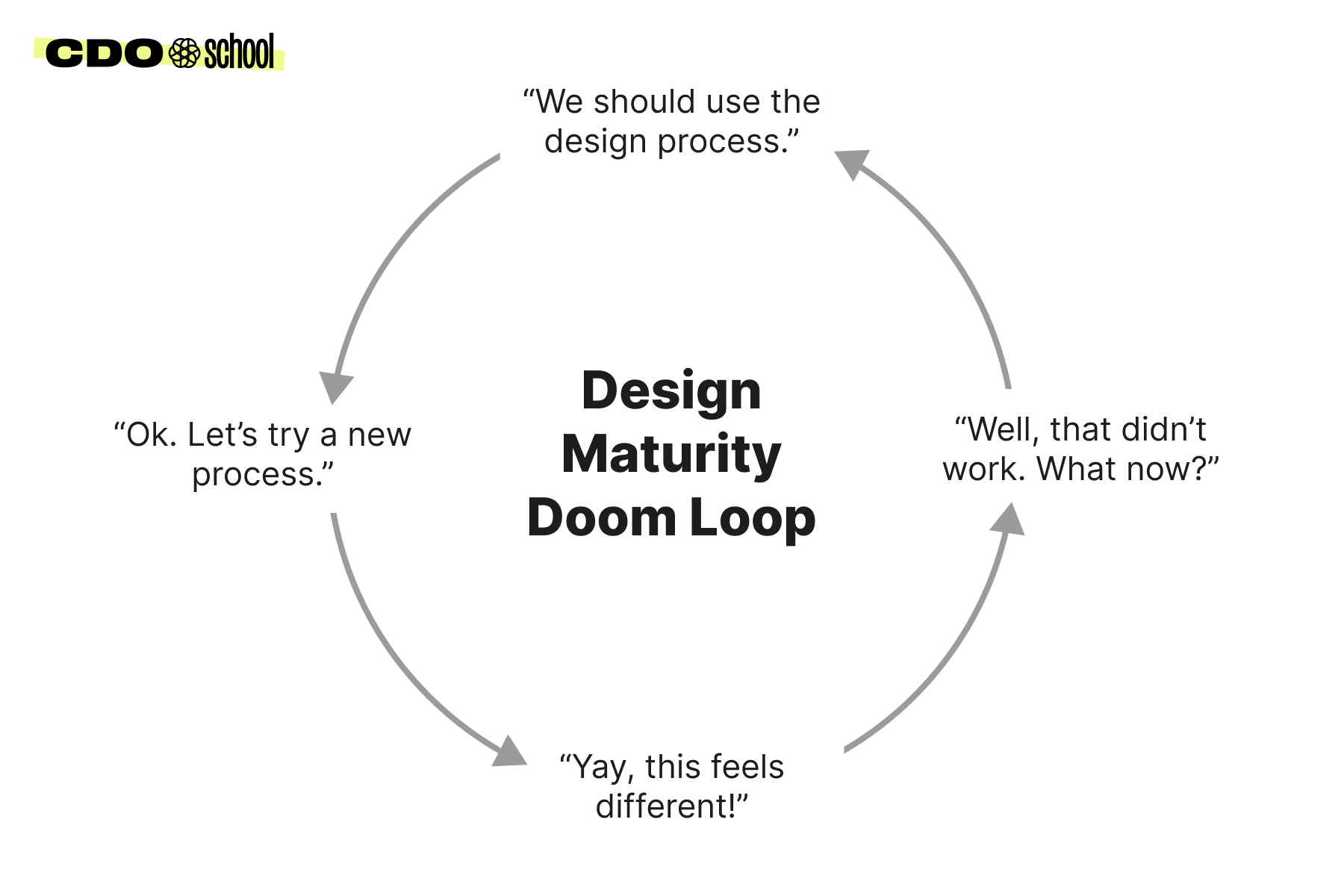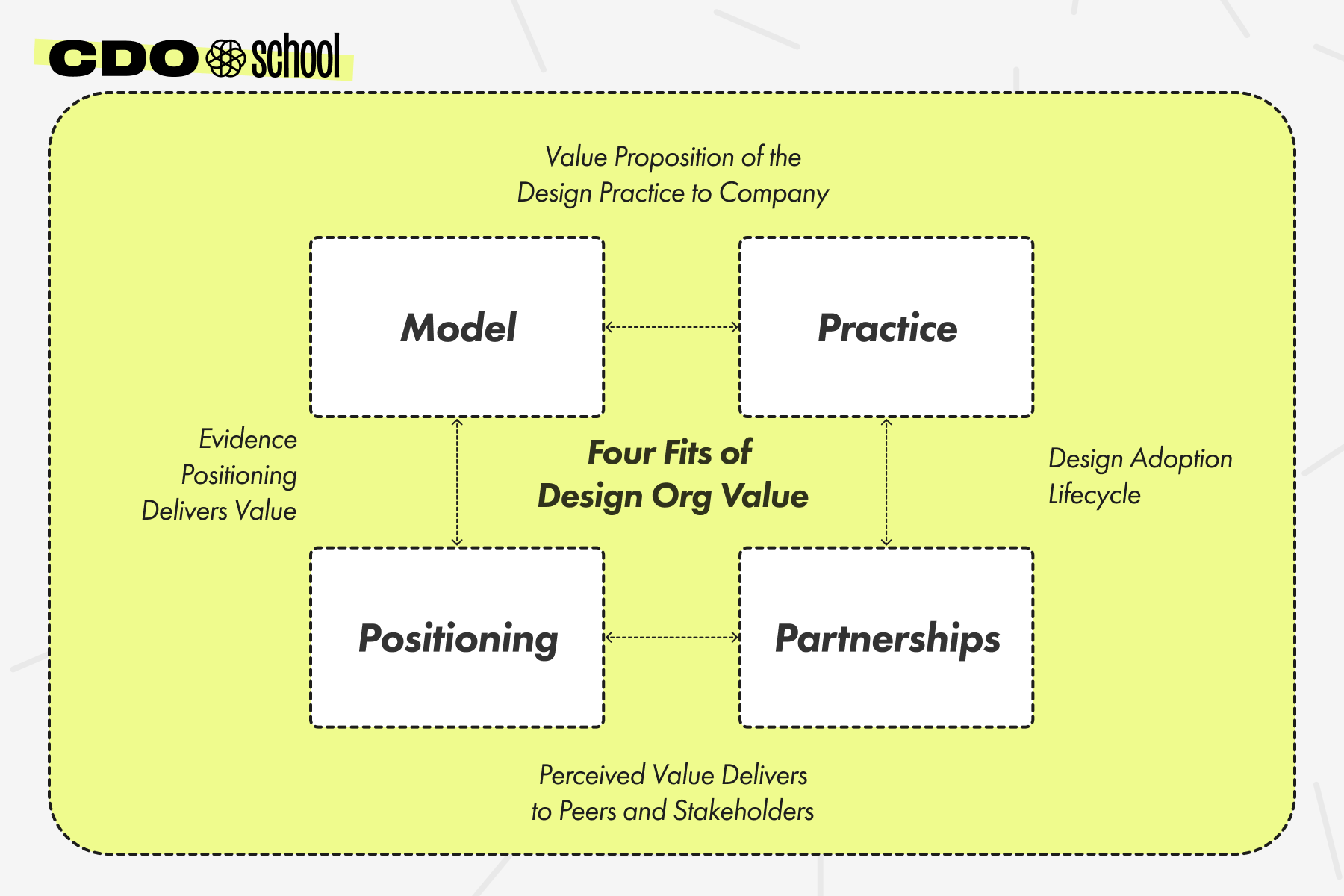Each time I built and led design teams, my goal was always to help companies transition from business-first perspectives to people-first. After all, this is what they said they wanted when they hired me.
The honest truth, though, is that success has been mixed. After working with other product and design leaders, I’ve noticed they’ve had similar results. A mixed bag of wins and losses, but predominantly, outcomes that didn’t move the needle much.
For a long time, I’ve been examining the difference between design teams that have become crucial to their company’s success and teams that are thought of as “nice-to-have” but not necessary. There are countless factors at play (business models, industries, markets, regions, public vs. private, stage of company, etc.) that come into play. It would be difficult for any economist or academic to pull together these factors in a way that shows causal reasons. Still, there is something happening that separates these teams.
While this is entirely anecdotal, there is a pattern I see:
- The design teams that have cemented themselves as indispensable to their company's success consistently calculate (and recalculate) how and where design and their team fit within the company.
- On the flip side, the teams that are considered “optional” wait for the company to define their place. They do their job, yes, but struggle to deliver value in new ways.
It’s a pattern I’ve thought about for a long time, and it’s taken me almost as long to explain what separates these teams. For a long time, I had trouble explaining this pattern, but then I read Brian Balfour’s essays on the Four Fits of $100M+ Growth.
Reading how a multisolving strategy helps a company grow helped me describe how a multisolving strategy helps design teams foster more people-first decisions.
But not without a trade-off.
To foster more people-first decisions in business, design must also be crucial to the company. These factors are intrinsically and forever linked.
Here’s a framework I’ve developed that captures how successful design teams navigate these waters. This isn't just a set of observations but a guide designed to transform how design leaders position their teams within the broader business landscape.
This framework borrows heavily from Brian Balfour’s work. It's not the Growth part but growing people-first interests.
This framework isn't a quick fix; it's a strategic approach that requires thoughtful application and regular reassessment. But for those leading design organizations, it promises a shift towards becoming an essential, rather than optional, part of your company's success story.
Before sharing the framework, here is some background on why I believe we need a new perspective.
How Design gets stuck
Imagine you're playing a video game where you keep falling into the same trap over and over again. Every time you try to get out, you fall back in, and it feels like you're never going to make progress. That's what a "doom loop" is like.
The term "doom loop" was made popular by Jim Collins, in his book "Good to Great." In it, he talks about how some companies get stuck in a doom loop. As Collins writes, a doom loop happens when people make decisions to fix problems fast, but those solutions don’t address the real issues, so the problems keep coming back again and again. A doom loop is this cycle where every fix leads to more problems, and it feels like you can't break out of it.
In my experience, the teams that stagnate are stuck in doom loops. They have likely made some progress in delivering value early on, but that progress has stalled. As a result, they’re under more and more pressure to provide more value, they’re faced with more skepticism about their judgment, and worse, they turn inwards and question their ability to get the team unstuck.
In my experience, I see three ways design teams consistently try to solve this problem:
- Advocate for “better” design
- Advocate for more resources
- Advocate for DesignOps and Design Systems
These are all critical to raising the maturity level design at a company, but none address the elephant in the room: effectively changing the minds of those with the power and influence to make business decisions.
Repeatedly delivering value requires more than just doing "better" design
When design teams are stuck in this cycle, the usual response I see is to push for more adherence to the design process. But if this were the best solution, why do designs created by that process fail to resonate with customers and deliver better outcomes to the company?
The flaw in the "use the design process" approach is that it can trap experienced teams in a doom loop. Teams that rely heavily on standard processes to get unstuck unwittingly limit their ability to create something new. And the longer they stay in this cycle, the more they lose credibility with their cross-functional partners and leaders.

This cycle typically goes like this:
Step 1: Designers push for a design process.
Step 2: The cross-functional team tries the new process.
Step 3: The team feels excited because the process is new.
Step 4: The solution has limited effect, the excitement passes, and the team is right back where they started.
(Repeat): The cycle restarts, but over time faith in the designers goes down.
Don’t get me wrong, I love a good process, but processes are overly relied upon as universal remedies. If you have strong thoughts about SAFe or Lean, you know what I mean. I’ve also witnessed many instances where teams used a design process well, but in the end, it didn’t translate to change. Perhaps you’ve observed this, too.
I believe a fresh perspective is required to break free from this loop.
It’s more than having more resources
Another common approach is to increase the number of people on the team. Simply boosting numbers doesn't translate to delivering new value. Increasing numbers often helps deliver value that’s already known.
The problem with the "more designers" mantra is its vagueness. If I ask ten designers from a team about their definition of great design, I get ten different answers. Such variance muddles the perception of design for leadership. Adding more designers could be costly and risky without clear value addition. Teams that are delivering more value are not doing so by multiplying voices. They harmonize the voices they have.
It’s more than Design Systems and DesignOps
This is a bit nit-picky, I’ll admit. I love me a good Design System and DesignOps teams are freaking magic. While both are vital components inside some design organizations, they aren't cure-alls for every company. Design Systems and DesignOps teams help Design Orgs multiply the value of design, but inherently, they don’t create value on their own.
Again, I firmly believe in both, and the people that do this work are incredibly important, but neither don’t get teams out of doom loops.
Introducing the Four Fits for Design Org Value
Another concept Jim Collins introduced was “the flywheel effect.” This concept describes how success is achieved when a consistent effort is placed in a series of small, connected actions that accumulate over time. When I spend time with design teams that are repeatedly creating new value, they are doing this exact thing.
These design teams are making bets on where to position Design to win and with whom, not as a zero-sum game, but in how design can successfully bring the most value to customers, the company, teams, and individuals. It’s a flywheel approach to running a design team.
The goal of this flywheel is to help the leaders who run design organizations consistently examine how the Design Org fits within the Company across four critical dimensions.
- Model ↔ Practice Fit
- Practice ↔ Partnerships Fit
- Partnerships ↔ Positioning Fit
- Positioning ↔ Model Fit
Here’s a visualization of the Four Fits of Design Org Value.

Model ↔ Practice Fit
A Design Team is a solution to a company problem, and that problem is often based on the business model and strategy. If you know the concept of product-market fit, this is how we examine how the design practice fits the business model and strategy.
Practice ↔ Partnerships Fit
The second fit is how Design Practices are built to fit with cross-functional and stakeholder partnerships. It’s not enough that we are advocates for customers. Our work has to help our partners as well. The degree to which we support our partners varies depending on the focus of our practice.
Partnerships ↔ Positioning Fit
In Marketing, Positioning refers to the place a brand occupies in the customers' minds and how it is distinguished from the competitors' products. Using this same concept, positioning refers to the place that Design occupies in the minds of our peers, colleagues, and stakeholders and how design is distinguished from other skills/teams at the company. Here, we continuously examine how the power dynamics work inside our companies so we can move peers and stakeholders from skeptics to adopters.
Positioning ↔ Model Fit
Lastly, the business model and strategy influence how design should be positioned inside the company. Here, we want to validate our positioning by gathering evidence that it’s working.
At CDO School, we consider these Four Fits foundational to our playbook. We encourage leaders to regularly assess and recalibrate these dimensions, fostering a culture where design is not just a functional element but a cornerstone of business strategy.
By embracing this framework, design leaders can pivot from being seen as optional to becoming integral, driving sustained value and innovation across their organizations.



